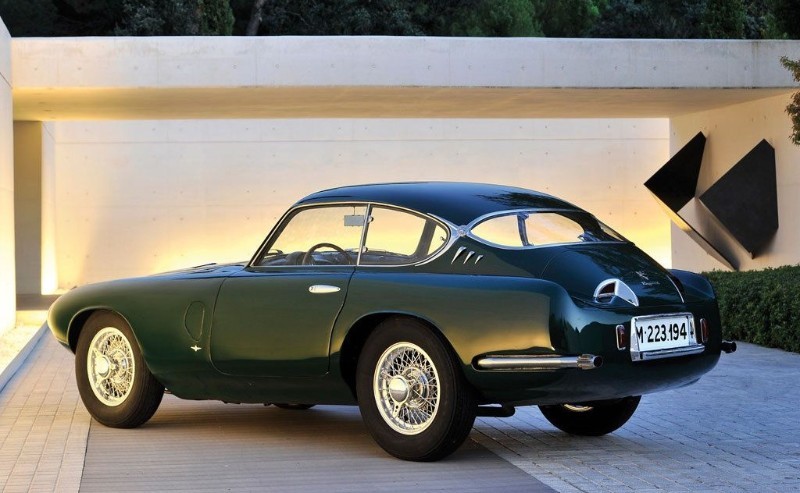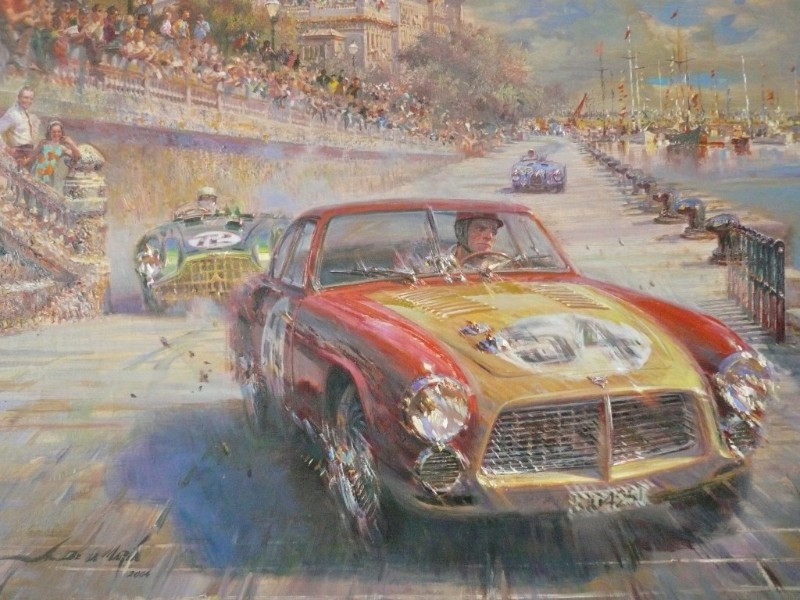Vintage Spanish sports cars: 14 Pegaso cars at Autoworld Museum in November
Pegaso’s are extremely rare sports cars that were manufactured in Spain between 1951 and 1956. In fact only 84 Pegaso Z-102s were built.
After the war, in 1945, the engineer and designer Wifredo Ricart left Alfa Romeo (in Italy) where he had been working on competition cars with a certain Enzo Ferrari, among others, and returned to his native Spain. He took up the Spanish government’s offer for him to head up the new company ENASA (Empresa Nacional de Autocamiones S.A.), which would manufacture the much-vaunted “Spanish truck”. Specialised in diesel engines, Wifredo Ricart also drew on his many years of experience in the field of racing cars. He began by restructuring the Spanish branch of Hispano Suiza with state capital in the framework of ENASA, and in 1946 brought out the first of a long series of trucks, a model based on the Hispano-Suiza 66G, which was nicknamed “mofletes” (chubby cheeks) on account of its bulbous front end.
As a logo he chose the mythical horse Pegasus, a symbol of strength and speed, and so it was that Pegaso came into being as a brand name.
Wifredo Ricart was very soon to return to his love of competition cars and in 1950 developed a sports car that was presented at the Paris Motor Show the following year. The Pegaso caught everyone’s eye, since it looked like a two-seater coupé and yet boasted the technical wizardry of a racing car. Its V8 engine with four overhead camshafts and Z-102B-type gear distribution is very distinctive. It was combined with a Transaxle transmission system with manual five-ratio box for optimal distribution of weight. The cars were built with the greatest of care but production was never cost-effective, and in the end fewer than a hundred vehicles found buyers. The bodies were one of a kind, too, and constitute veritable works of art on wheels. Most of the cars were bodied as berlinettas or competition barchettas by Touring Superleggera in Italy, as convertibles by Serra in Spain and as coupés and convertibles by Saoutchik in France. Not to mention the 100% factory-built ENASAs.
Racing cars were the standard bearers of the firm’s technical expertise, but prosaically Pegaso would end up thriving thanks to the production of trucks, vans, buses, railcars, armoured cars and trams, for which there was much more of a need than for luxury cars in the context of Spain’s economic recovery in the 1950s and 1960s. The firm Pegaso was bought out by an American consortium for a while, before being taken over by IVECO, a subsidiary of Fiat Industrial.

Pegaso – The Forgotten Brand Exhibition at Autoworld
The aim of this exhibition from November 10 until December 12, is to bring together fourteen of these cars at Autoworld for a month – a feat of record proportions when you bear in mind there are only about sixty left in the world!. These will include the “Thrill” (Touring) and the Cúpula (ENASA), but also a Saoutchik convertible, Touring Superleggeras, Serras and a rare ENASA racing car with a dual-compressor engine.
Carefully selected by Mario Laguna and Autoworld with a view to acquainting visitors with their amazing story, the Pegasos created by engineer Wifredo Ricart and bodied by ENASA, Touring Superleggera, Saoutchik or Serra, will tell us about their own special adventure in the history of dream cars.
Initially known for its heavy goods vehicles (“El camión español” – the Spanish truck), the make is also the only post-war Spanish sports-car manufacturer.
Worth knowing
It was in Belgium, at Jabbeke in West Flanders, that Pegaso broke the speed record on 25 September 1953 with Celso Fernandez at the wheel of a competition Pegaso Touring Spider fitted wirh a 2.8l engine, reaching a speed of 243km/h.




